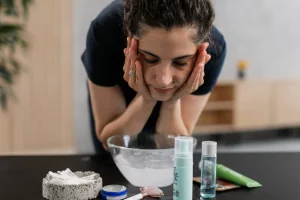Acne Treatments Tailored for Different Skin Tones and Ethnicities
3 min read
Acne doesn’t discriminate—but skin does. What works for one person might leave another with irritation, dark spots, or worse. The truth? Skin tone and ethnicity play a huge role in how acne manifests… and how it should be treated. Let’s break it down.
Why Skin Tone and Ethnicity Matter in Acne Treatment
Not all acne is created equal. Darker skin tones, for example, are more prone to post-inflammatory hyperpigmentation (PIH)—those stubborn dark marks that linger long after a pimple is gone. Lighter skin might show more redness or scarring. And let’s not forget cultural differences in skincare routines, like oil-based practices in some Black and South Asian communities, which can clog pores if not balanced right.
Common Acne Challenges by Skin Tone
| Skin Tone/Ethnicity | Common Acne Issues | Treatment Risks |
| Fair/Light | Redness, cystic acne | Over-drying, irritation |
| Medium/Olive | Combination breakouts, PIH | Uneven fading, sensitivity |
| Dark/Deep | PIH, keloid scarring | Hyperpigmentation, ashiness |
See the pattern? A one-size-fits-all approach just won’t cut it.
Acne Treatments for Darker Skin Tones
Darker skin requires a gentle touch—aggressive treatments can trigger PIH or worsen existing spots. Here’s what actually works:
- Avoid harsh exfoliants: Skip physical scrubs (they cause micro-tears) and opt for chemical exfoliants like mandelic acid or lactic acid (10% or lower).
- Hydroquinone alternatives: Try niacinamide or azelaic acid for fading dark spots without the harshness.
- Moisturize strategically: Look for non-comedogenic oils like squalane—dry skin worsens PIH.
Pro tip: Patch-test everything. Darker skin shows irritation later, so a small test area saves heartache.
Acne Treatments for Lighter Skin Tones
Lighter skin might handle stronger actives better, but redness and sensitivity are real risks. The game plan:
- Salicylic acid is your friend: 2% formulas unclog pores without over-drying.
- Soothe inflammation fast: Centella asiatica or aloe vera calm angry breakouts.
- Sun protection is non-negotiable: UV rays worsen redness and scars—opt for mineral SPF.
Fun fact: Lighter skin often shows purging (a temporary breakout when starting new actives) more visibly. Don’t panic—it usually settles in 4-6 weeks.
Ethnic Skincare Nuances You Should Know
For Black Skin
Traditional haircare products (like pomades) can cause pomade acne along the hairline. Switch to water-based formulas and cleanse edges gently.
For South Asian Skin
Turmeric masks? Great for inflammation—but can stain lighter complexions. Mix with yogurt or honey to dilute.
For East Asian Skin
Layering multiple products is common, but overloading can clog pores. Stick to one active at a time (e.g., snail mucin or retinol, not both).
The Big Takeaway? Listen to Your Skin
Acne treatment isn’t just about zits—it’s about how your skin reacts. Dark spots, redness, oil production… they all whisper clues. Maybe your skin loves tea tree oil. Maybe it hates benzoyl peroxide. The best treatment? The one that respects your skin’s unique language.






